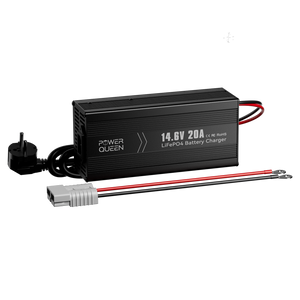Self-heating 12V 100Ah Power Queen battery tested
LiFePO4 batteries are known for their long cycle life and safety. Unfortunately, they cannot be charged below 0 degrees Celsius. Luckily, the company... Power QueenI received two of these batteries free of charge for my 24V off-grid solar system. In this post, we'll look at how they work and my capacity test. At the end, I'll open the battery and we'll take a look inside.
If you would like to learn more about our experience with the Power Queen solar battery, read on my full article. Otherwise, here is a brief summary of our experience.
Following the technical data for the battery, here are a few brief comments from me:
The voltage ranges in the technical specifications are borderline values. I recommend a charging cut-off voltage of 13.6V and a discharging cut-off voltage of 12V. For higher discharge currents, you can also set it to 10.8V. If the battery needs to be charged quickly, the voltage can be set to 14.4V.
Capacity test
Between discharging and charging, we can determine the efficiency of the lithium iron phosphate cell chemistry. For our battery cells, this is an incredible 99.77%! This figure does not include losses from the charger.
Internal structure of the battery
The first thing I noticed was that the cells are installed horizontally. That's not a problem. However, the battery should only be installed in this position in your vehicle or photovoltaic system if you don't know how the cells are integrated internally. The top side of the LiFePO4 cells always has the positive and negative terminals, as well as a pressure relief valve. This valve must never point downwards.

The first heating plate is located between the BMS and the cells. The second heating plate is at the bottom of the cells, i.e., the battery base. So far, so good.
Conclusion
I'm very satisfied with the capacity, the weight of around 10 kg, and the 100A charging and discharging current. The heater will have to prove itself in winter. If there are any important points to consider, I'll post them here. reside-heimwerken.de to name.























